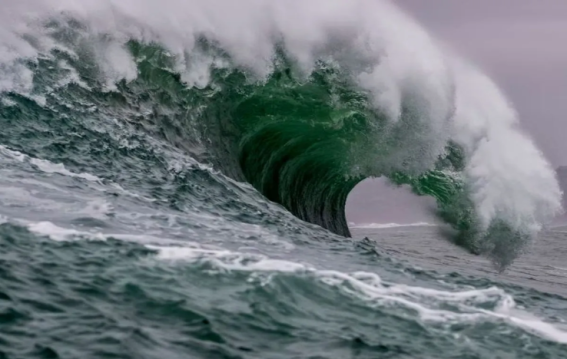

Last Updated Jul - 30 - 2025, 11:56 AM | Source : Fela News
Tsunami Explained: In this explainer, we will explain the science behind tsunamis in simple language. We will know whether earthquakes are the only cause of tsu

Tsunami Explained
A powerful earthquake of magnitude 8.8 has struck the coastal region of Russia. Following this, tsunami warnings have been issued in several countries, including Japan, the United States, and Mexico. The effects of the waves have already begun to show in the coastal areas of Russia’s Kuril Islands and Japan’s Hokkaido region.
What is a tsunami?
A tsunami is a large ocean wave that forms due to disturbances under the sea, typically caused by powerful earthquakes. When a strong earthquake occurs beneath the ocean floor, its energy spreads through the water. The ocean floor is pushed upward or downward, displacing a massive amount of water, which rushes in all directions as large waves—these are known as tsunamis. These waves can travel at high speeds for several kilometers and cause widespread destruction when they hit coastal areas.
Are earthquakes the only cause of tsunamis?
Earthquakes are the most common cause of tsunamis, but not the only one. Volcanic eruptions and large underwater landslides can also trigger tsunamis. For example, in 1883, the eruption of the Krakatoa volcano near Indonesia caused a massive tsunami that killed around 30,000 people.
Where does the word "tsunami" come from?
The word "tsunami" is Japanese. "Tsu" means "harbor," and "nami" means "wave." Sometimes, tsunamis are mistakenly called "tidal waves," but this is incorrect since they have no connection to tides.
Initially, tsunami waves may appear small in the open ocean, but as they approach the shore, their height increases dramatically and causes massive destruction. Moreover, tsunamis don’t usually come as a single wave—multiple waves can strike over time.
A major tsunami in Roman times
In 365 AD, a devastating tsunami struck the Egyptian city of Alexandria. A Roman writer described how the sea suddenly receded, exposing the seabed, and then returned with massive force, flooding the city and killing thousands. Some ships were even thrown onto the rooftops of houses.
How destructive can a tsunami be?
The destructive power of a tsunami depends on various factors: the magnitude of the triggering earthquake, the volume of displaced water, the shape of the ocean floor, and the coastal structures that might absorb or deflect the waves.
For instance, the tsunami in the Indian Ocean in December 2004 was caused by a 9.1-magnitude earthquake. The energy released by this quake was 23,000 times greater than the atomic bomb dropped on Hiroshima. It killed approximately 220,000 people across 11 countries—many of them located thousands of kilometers from the epicenter.
Sep - 15 - 2025
In a major international development, Israeli Prime Minister Benjamin Netanyahu has formally taken “full responsibility” for an attack ... Read More
Sep - 15 - 2025
John Bolton, the former US National Security Advisor, has sounded an urgent warning: the United States must address and right key strategic misstep... Read More
Sep - 13 - 2025
In an emotional address, Erika Frantzve Kirk, widow of conservative activist Charlie Kirk, gave her first public remarks since his assassination at... Read More
Sep - 13 - 2025
A strong earthquake of magnitude 7.4 struck off the coast of Russia’s remote Kamchatka Peninsula on Saturday, sending tremors across the Far ... Read More
Sep - 12 - 2025
In a report released in 2025, Canada’s Department of Finance has for the first time officially acknowledged that extremist Khalistani groups ... Read More
Sep - 12 - 2025
The recent assassination of conservative activist Charlie Kirk during a debate at Utah Valley University has brought Utah's death penalty methods b... Read More